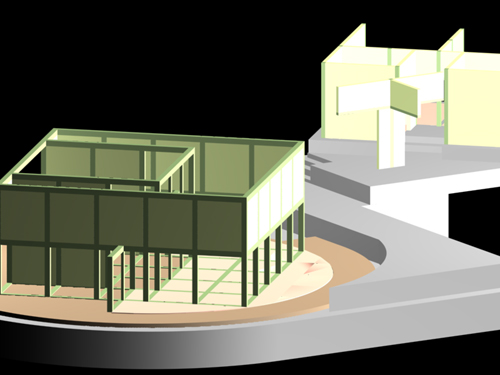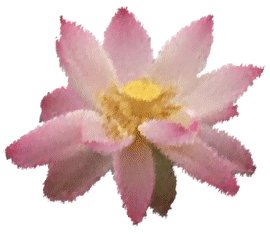
![]()
Case studies of Water Temple in 3d.
The temple requires that the visitor make a specific progression through doors and past walls to attain the heart of the structure. Exposed concrete walls define these spaces by providing structural support and impermeable barriers.

The circular wall surrounding the main hall (hondo) is cedar board with cashew finish in a Japanese local material for building temple. The use of this material begins to define a different language from the concrete walls. The floor within this main hall is also layed with hinoki cypress, which again reiterates the sanctum as no ordinary place within the temple.


Sanctum is further broken down with a matrix of 1.8m squares. This, as well as the 2 tatami rooms in the meeting room, is achieved by laminated timber of cashew finish. It can be said that it reflects a Japanese space.


Tatami mats in the outer chamber of the santum as well as the rooms in the meeting area provide a grounding infrastructure in terms of defining geometrical scale (one ken) and proportions.


Plasterboard on the column grid defines another layer of space within the rooms. These boards are not always full height. In the sanctum, most of them appear on the top half of the columns, providing visual privacy and controlling the circulation of light rather than functioning as hard walls.


Doors function as yet another layer of space defining element. The intricate louvered doors are permeable barriers which are continuation of the wooden columns.


The access into the temple is through the main stairway which represents the contemplative journey into the temple from the ground level. This stairway also functions as the strongest partition by dividing the temple into two separate spaces: main hall(hondo) and the meeting hall(shuesho).


A small footpath leads the visitor through a set of imposing concrete walls. The visitor can reach the temple by crossing a large lotus pond, by becoming submerged amidst the vegetation and the water. The underground temple supports this oval pond as its roof. The only source of natural light is an opening situated behind the representation of Buddha, facing due west, so that the setting sun inundates the temple with its rays.
Hence it can be concluded that, although the form of the temple doesn't resemble any of the conventional pagoda temple, however, the spirit of the building being a temple is very much attached with it's mysterious journeys and the interiors as well. The interior more or less follows the planning of conventional temple in terms of placements and the materials that forms the concept of 'moderate' and 'plain emptiness'.
Previous Next
![]() This
is a thesis website by ressox studio.
This
is a thesis website by ressox studio.

